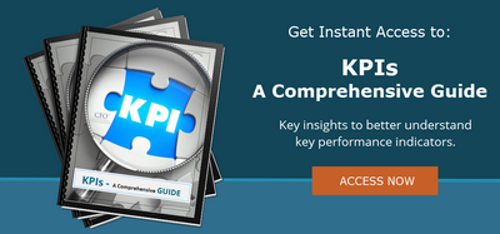
Uncertainty, a term frequently mentioned by business leaders today, essentially refers to business risk - an area CFOs often focus on. Let's delve into the various types of risk a business may face.
Economic Risk relates to broader influences on revenue and the company's bottom line, encompassing elements like inflation, foreign exchange rates, and interest rate fluctuations. These all affect business pricing, subsequently influencing consumer behavior and, ultimately, net income. For instance, inflation can increase the costs of goods and services or the salary demands of employees, thereby impacting overhead costs. Foreign exchange rates can affect international customers' purchasing power if their currency's value decreases relative to yours.
Financial Risk predominantly relates to business debt, including interest rates discussed under economic risk, but chiefly how it impacts the cost of debt and credit availability for significant purchases. This can influence business investments. For example, if a business needs to invest $2 million in renovating a building and can borrow at a 3% interest rate, they will pay $500,000 of interest over 15 years. However, if the loan's interest rate is 8%, they will pay an additional $1 million in interest over the same period, thereby escalating the renovation cost by 50%.
Social Risk encompasses environmental and health issues. Examples might include hazardous materials mitigation events like finding asbestos in a building or addressing a chemical spill. It could also cover global health issues like COVID or evolving trends in hybrid work environments. Compliance costs related to COVID business restrictions, or the cost of maintaining underutilized office space in a work-from-home environment, are significant considerations.
Political Risk may include legislative changes due to shifts in political parties in power. The oil and gas industry, for instance, likely feels this impact extensively. Geopolitical risk factors also come into play. For example, conflict in countries like Ukraine and Belarus can significantly disrupt businesses that employ local talent.
How do these risks affect your business, and what can be done to mitigate them?
How will your customers, employees, and vendors react? Will there be sufficient cash for business investments? These are common questions of late.
The CFO's role in this environment is to recognize the risks, understand their implications on the company's financial future, and collaborate with business leadership teams to formulate mitigation and remediation measures that can be activated as these risks start to materialize.
Education is critical! This is why CFOs are in a constant state of learning. The good news is that there is a wealth of information available. The Colorado Society of CPAs, for example, provides a “state of the state” at many of their conferences.
Other organizations, like Finance Executives International and the Colorado Technology Association, offer similar insights at their annual conferences. CPA firms are another great source of information. Given their diverse client base, they are skilled at identifying and reporting on trends.
To comprehend economics from a micro to macro scale, CFOs often employ tools prepared by external entities. One I favor is from a group called ITR Economics. They analyze numerous political issues and extrapolate past trends to predict future business conditions across various industries.
In addition, numerous organizations regularly publish commentary on the state of risk in the business world, such as the latest global economic outlook & conditions by McKinsey. I have become a big fan of the chat search in Bing, as it provides direct references and aggregates numerous sources simply. Of course, a critical approach to information evaluation is necessary.
The Financial Model is the CFO's "sharpest tool" when determining how a business risk might affect an organization. These models, often based in Microsoft Excel but also available through various subscription-based software packages (for instance, Planning Maestro by Centage), are essential planning aids for short, mid, and long-term projections. They make assumptions about customers, vendors, employees, and risks to develop a financial outlook for the business. CFOs can adjust variables to "stress" the model and see how different factors will impact the bottom line and cash flow. For instance, a well-designed model can demonstrate the effect of fluctuating interest rates on the cash required for debt repayments, using our earlier office remodel example.
Another useful tool for CFOs is corporate reporting using Key Performance Indicators. Tools like IBM Cognos, Solver Global, and Microsoft’s PowerBI enable CFOs to create dashboards that show real-time movement in financial results. These visualizations help management clearly see the outcomes of their efforts and react promptly to signs of risk.
Lastly, the most crucial tool for a CFO navigating an organization through business risks and uncertainties is the annual planning and periodic reforecasting process. During annual planning or budgeting, the CFO amalgamates information from business leaders into a comprehensive financial model, applies stress based on identified risks, and produces reports that give leaders a perspective on how their decisions will affect financial results. This multi-step process involves many iterations to refine the costs and revenues from the actions. Once established, the CFO periodically provides an update, or reforecast, based on a comparison of the actual results against the plan throughout the year.
By understanding, planning, modeling, and reporting, the CFO prepares a business to handle the current and future uncertainties it will encounter. History shows that uncertainties will always exist; they simply change and shift over time, requiring CFOs to remain vigilant.
The team at CFO Selections has the expertise you need to develop KPIs. Don't hesitate to reach out to us!
Whether you're an aspiring manager or a seasoned executive, the KPI metrics outlined in our eBook will provide key insights to better understand key performance indicators.
About the Author
 Scott Fowle is a Partner with CFO Selections, serving as the Practice Manager for the Colorado region.
Scott Fowle is a Partner with CFO Selections, serving as the Practice Manager for the Colorado region.
He joined the business development and marketing team at CFO Selections in 2021 to establish the Colorado practice. Scott started his own outsourced CFO business in Colorado in 2016 serving owners, founders, and business leaders in the financial services, software, construction, manufacturing, and professional services industries.
As he leads the Colorado Practice, Scott’s extensive experience in business, leadership, strategy, and finance enables him to quickly understand and assess each client’s unique needs.
Learn more about Scott here.






